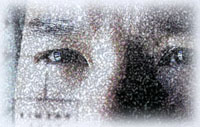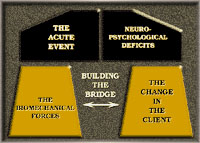
Brain Injury Elements
There are four brain injury elements needed to diagnose a permanent brain injury.
They are:
- Biomechanical Force Sufficient to Cause Injury to the Brain;
- One of Acute Signs or Symptoms of the ACRM’s definition, of MTBI.:
a) coma or loss of consciousness either at the time of the accident or sometime later due to intercranial pressure,
b) change in mental state at around the time of the trauma,
c) amnesia, particularly Post Traumatic Amnesia, or
d) focal neurological deficits. Not being able to focus on the situation of surroundings; - Neuropsychological Deficits as detailed on a neuropsychological assessment if an assessment is done; and
 A Person who’s cognitive function and behavior have changed after the injury
A Person who’s cognitive function and behavior have changed after the injury
The diagnosis of traumatic brain injury can be confirmed without a positive imaging study. Positive image studies such as a CT or MRI. It can be proven with these four brain injury elements. The problem is that in the acute stage, the doctors don’t consider the injury serious enough. Because of this they may not perform a sufficiently detailed inquiry to find and/or document such elements.
For most of these elements it will be obvious to a family member or a loved one. Even if they point them out to a physician it doesn’t mean that they will be taken seriously and more evaluation will be done. For instance, your loved one is in an accident and seems to be functioning fine but when asked what month it is, they forget a whole chunk of time. They may have post traumatic amnesia. Or let’s say that your loved one is normally a docile person. After the accident they become extremely irritable and hard to manage. This would be an example of change of mental state. Only those who knew them would know this isn’t the same person as before the accident. All these are brain injury elements.

 A Person who’s cognitive function and behavior have changed after the injury
A Person who’s cognitive function and behavior have changed after the injury